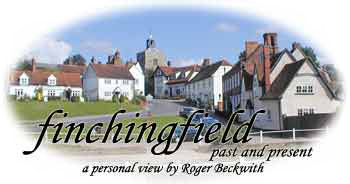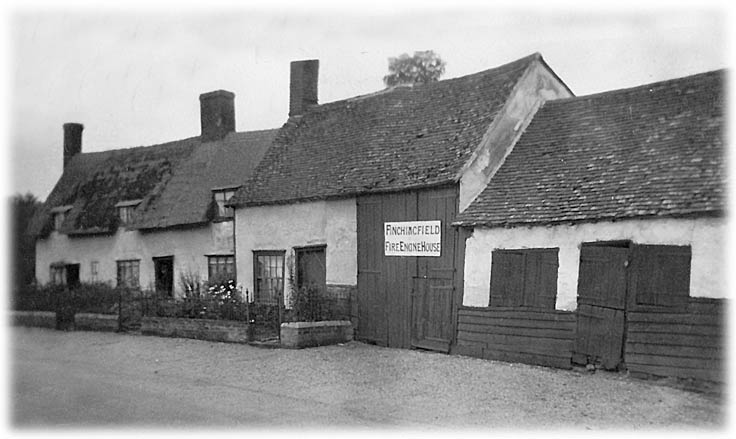
The horse-drawn fire-engine's big moment came in 1905 when the Green Man Inn burnt down, although, aided by an engine from Wethersfield, the adjacent Guildhall was saved - see the historic days page.

The 1990s picture shows the fire engine house is now half the size and the building to the right has gone completely.
The Old Workhouse
Dating from the sixteenth century, perhaps earlier, this building may be the oldest in the village.
The Workhouse Test Act of 1723 required anyone seeking poor relief to enter a workhouse and do a set amount of work, usually unpaid. In 1767 two churchwardens, John Beddall and Edward Myhill, undertook the task of "erecting of ye workhouse", meaning finding and equiping a suitable building. The house was rented at £7 per annum and a John Strachy was appointed
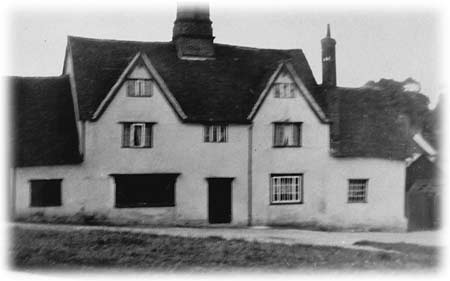
The terms for his successor, Thomas Moor, reduced the minimum number of inmates to 16 and he had to provide sufficient "meat, drink, washing, etc" and to "cloath out" any person taken out of the house. Later managers were Samuel Turner, John Cracknell and finally Simon Turner (possibly Samuel's son) who managed to get his remuneration increased to 3/- (15p) per person per week. A couple of years after changes to the Poor Law in 1834 the inmates were transferred to a large building in a nearby town.

In later times the building housed a butcher's shop. Notice the large window to the left of the door in the 1930s view. In the 1990s picture the window has been replaced, a small porch roof added to the door, a tv aerial has appeared, otherwise little of the outside seems to have changed.
Cottages

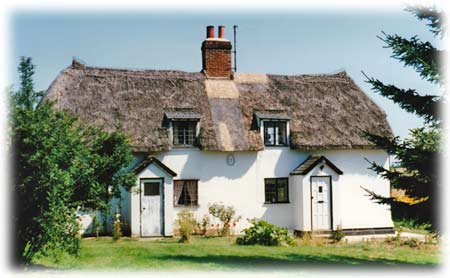
These pretty thatched cottages are just outside the village. Painted white when the 1990s picture was taken they were clearly a darker colour in 1931, with lighter paint around the doors and windows.
The cottages have acquired porches in the intervening sixty years. They seem to change the building's character and make it appear smaller.
The Sullens Shop
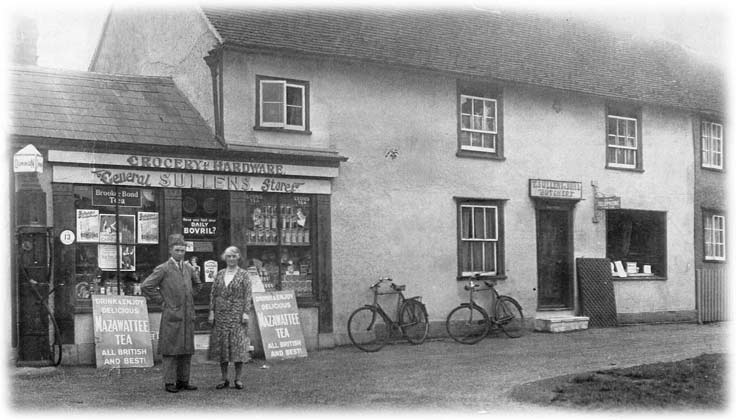
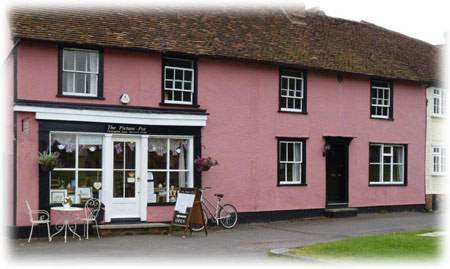
The shop was a feature of the village for many years. In the mid-1920s picture we see Bert and Alice Sullens. The sign over the door to the right says "T Sullens & Sons Butchers" and the protuding sign to the right of it indicates that "You may telephone from here". Also note the petrol pump at the left of the photo. Definitely a general store!
In the 2012 picture the building has had a small first floor extension but is still being used as a shop.
The Round House
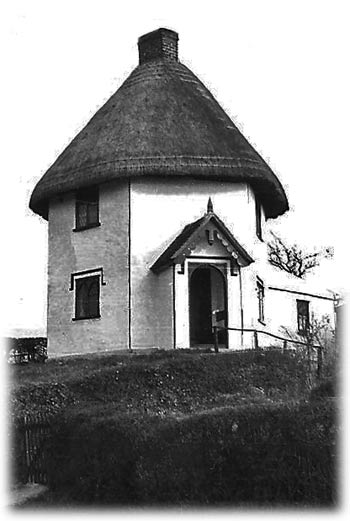
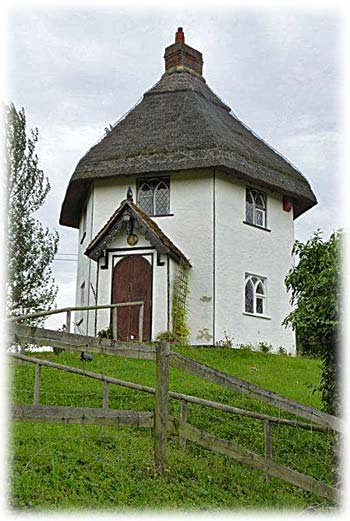
Not round at all, but hexagonal and also known as the Pepper Pot, this unusual building can be found in Duck End. It dates from the late 18th century. The black and white photo was taken by Anita Watson in the late 1950s and the colour one and the shot of the shop above were taken by Kathy Martin in 2012.
